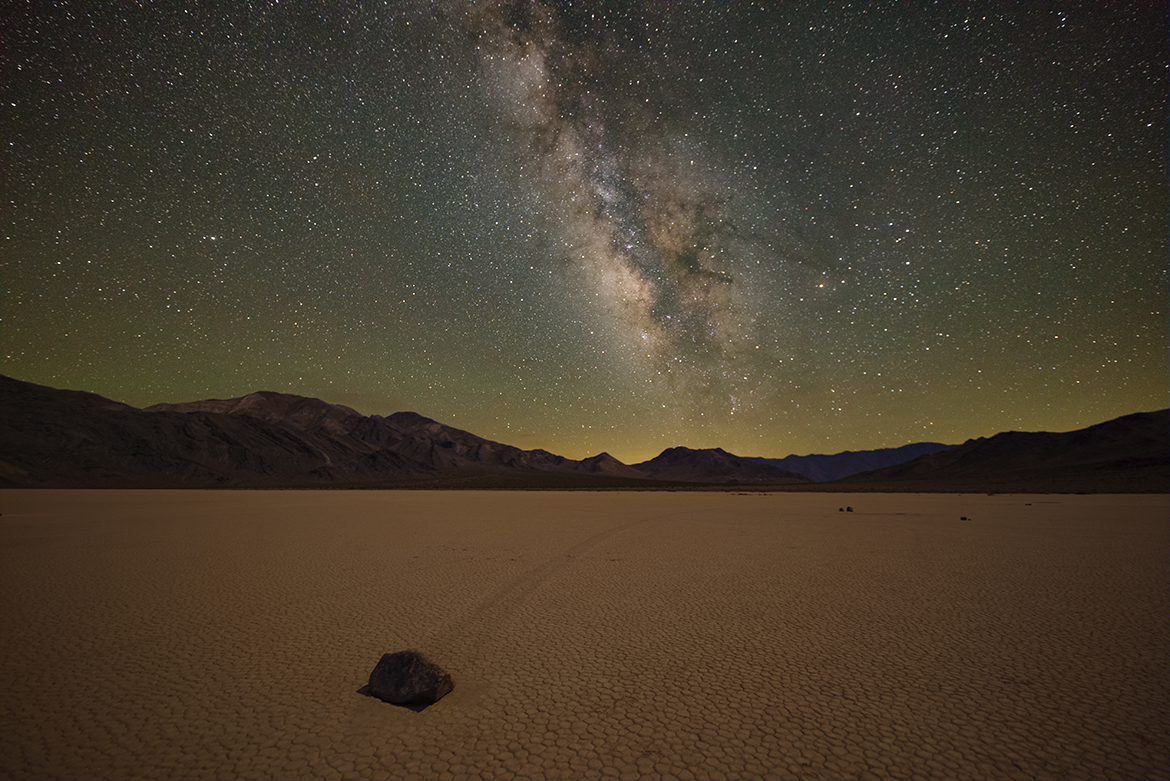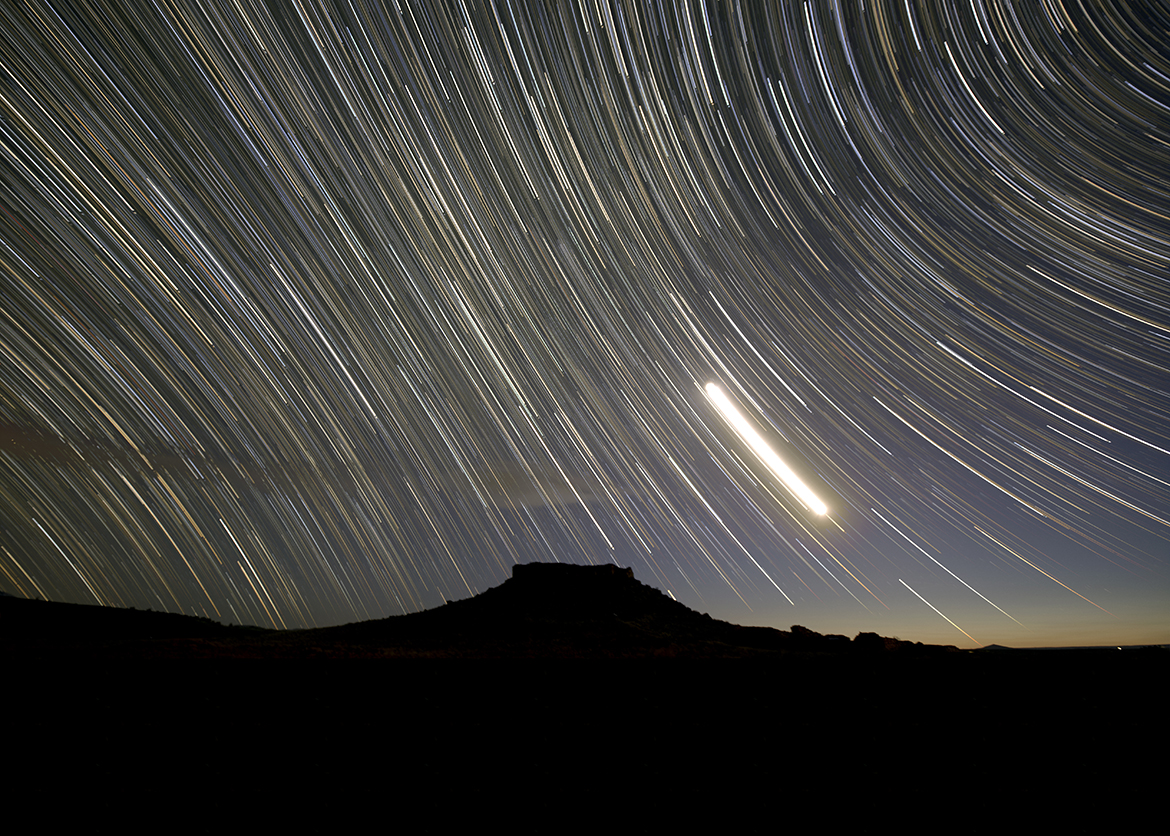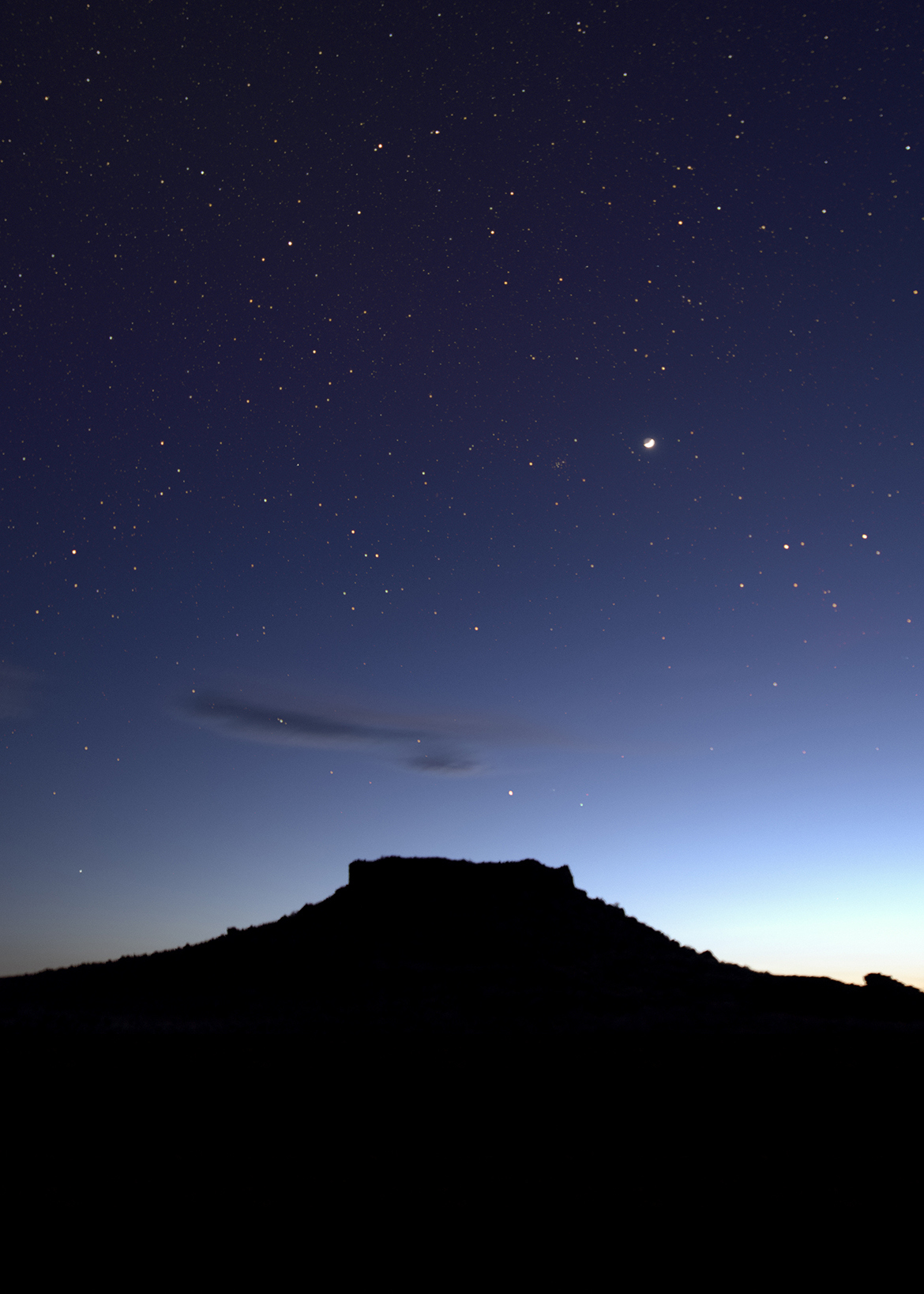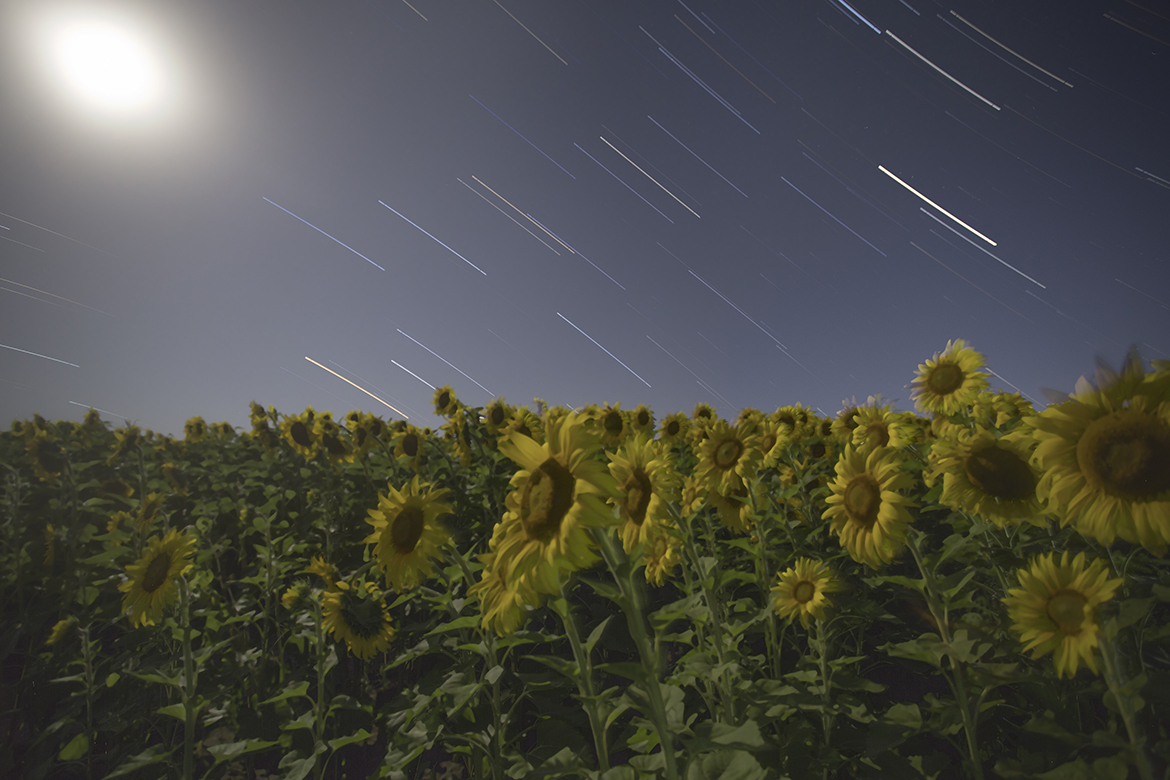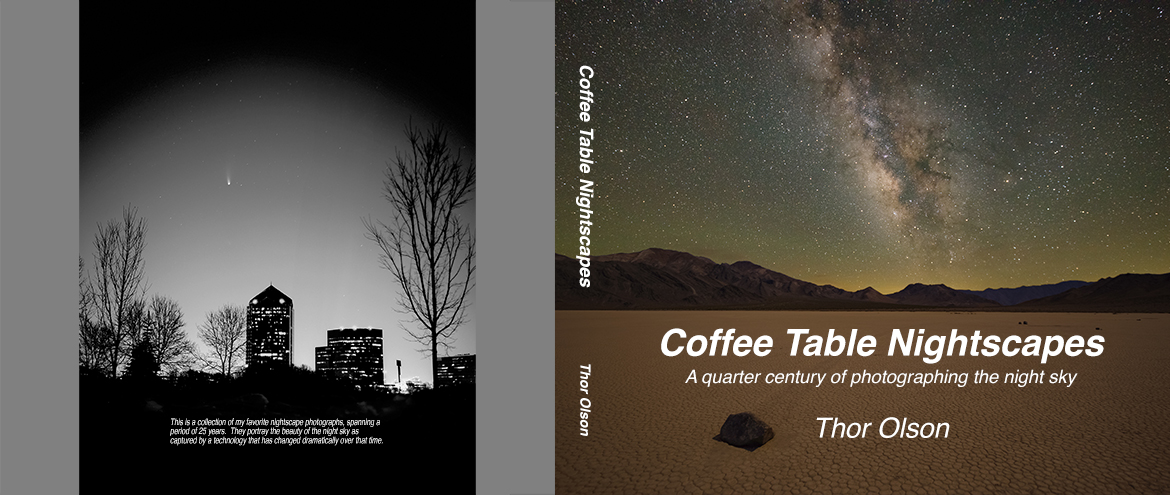
I finally caught up with my blog postings of past nightscape photos to reach the ones I made this last year. And I have now completed their assembly into a printed photo book.
I didn’t realize when I started this project that the pictures would span 25 years, and that they happened to straddle the transition from film photography to digital. The chronological order reveals the change in technology as I pursued my various night sky targets.
For completeness, I posted the preface and introduction as blog entries, but their real place is in the leading pages of the printed book where all the photos are collected under one cover. I was pleased to be able to give copies of it to my family and close friends this holiday season. Not all of them have coffee tables, but I hope they find a place for it.
Although this marks the end of this particular project, I doubt that I am really done. As mentioned in the epilogue, the capabilities of cameras just keep improving and so I am now excited to start the next 25 years of taking pictures of the night sky!

